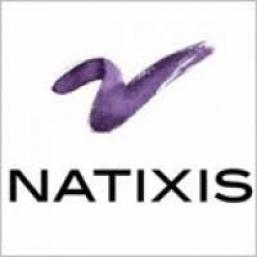
VISEO supports Natixis Financement to model its reactivation score
The international corporate & investment banking player wanted to "reactivate" its customers who had already used the credit part
The 3rd largest French consumer credit player wanted to "reactivate" its customers who had already used the credit part.
Dedicated to consumer credit, Natixis Financement, France's third largest consumer credit provider, develops revolving credit offers for the BPCE Group's banking networks that can be used on the Group's credit cards, as well as for the management of amortising personal loans.
When Natixis Financement called on VISEO, they wanted to target customers who had already used the credit part one or more times and had finished repaying, via different financing channels.
"We have an history of the behaviour of our customers to whom we direct marketing campaigns, mainly by email and SMS," explains Delphine Morin, Head of the Customer Knowledge division at Natixis Financement's Marketing and Innovation Department, which has €16.8 billion in outstanding consumer loans (2014).
How can we better manage the reactivation of credit?
"However, a quarter of our portfolio clients no longer use it and it is them that we want to target precisely and above all understand why they no longer use this credit," continues Delphine Morin.
This is what Natixis was looking to "score": to build a reactivation score on the former assets of their revolving credit offer and thus identify the most interesting ones to reactivate. This is where VISEO came into play between April and June 2016.
"Natixis provides its customers with a revolving credit card. However, the activation of this card is not systematic and does not last over time. A customer can activate his card at a certain point and then distance himself when the credit contracted is repaid, reports the VISEO expert data scientist, Catherine Chevalier, in charge of the project. It then changes to ex-active status. So how can we better manage the reactivation of credit?".
The challenge for Catherine Chevalier was to optimize the allocation of communications aimed at reactivating ex-active clients, especially since Natixis has a 93.5% rate of satisfied end clients. "The objective of this mission was to find the levers and then identify the most relevant ones," she explains.
700,000 files analyzed for score modelling
To do this, "we have identified two families of levers. On the one hand, the "RFM behaviour / segmentation (recency/frequency/amount)" family by studying the behaviour of past revolving credit, in particular of ex-assets that have reactivated themselves, and thus the most characteristic variables of reactivation. On the other hand, the so-called "communication" family, by analysing the type of behaviour of ex-actives, the financial characteristics of the case and those linked to income and expenses or even "has it already been subjected to communication channels on behalf of Natixis".
In the end, VISEO relied on nearly 700,000 files to model the score. "Natixis was surprised at how quickly we did this," adds Frédérick Vautrain, Director of Data Sciences VISEO.
"Usually we sent our communication to everyone, so we'll be able to target fewer people but better. The profitability of the campaign must be there. For the Christmas period, we have included this score for our communications and we will be able to check its effectiveness," explains Delphine Morin.
"Now that we know who to target by group of ex-actives, it would be interesting to work on personalizing emails and sms," she says. And to rely even more on Big Data in the future that would give us access to new types of data like: "this customer has a x% chance of being active within the year'."
Check our other Success Stories:






